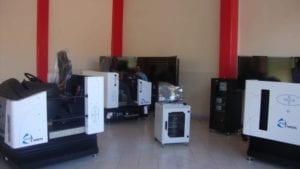South Africa’s Transnet starts strategy to boost coal freight volumes
South African state logistics group Transnet said Tuesday it had begun a seven-year Market Demand Strategy under which it will spend Rand 300 billion ($37.8 billion) on capital projects including expanding rail infrastructure to raise freight volumes of coal to 97.5 million mt/year from 68 million mt. It will also boost iron ore freight volumes to 82.5 million mt/year from 53 million mt, as well as volumes of other commodities such as manganese. Transnet said Rand 205 billion would be allocated to rail projects, increasing rail volumes from around 200 million mt to 350 million mt and increasing TFR’s (Transnet Freight Rail’s) market share of container traffic to 92% from 79%. “The MDS will catapult Transnet Freight Rail, which has the lion’s share of the investment program, into the world’s fifth biggest rail freight company,” it said in a statement. The strategy was first mentioned by President Jacob Zuma in his State of the Nation address in February when he said it would be aimed to improve Transnet’s reliability and efficiency and optimize South Africa’s freight logistics system to improve supply chain competitiveness.“Through the MDS, Transnet will satisfy validated demand by accelerating investment in freight logistics capacity and will support reliable, efficient and cost-effective movement of bulk and manufactured goods,” Transnet said.
TFR carried 62.2 million mt in the April 2010-March 2011 financial year and said previously that it was on track to rail 70 million mt of coal to Richards Bay Coal Terminal (RBCT) in 2011/12. TFR has hindered the 91 million mt/year RBCT from reaching its full export capacity, although it has stepped up coal railings on the RBCT line since July 2011, transporting around 6 million mt/month. Transnet chief executive officer Brian Molefe also said previously that the group intends to spend about Rand 15 billion on the RBCT coal line, with 60% of the capital expenditure to be used on maintenance backlogs, with the remainder on new rolling stock. Source: www.platts.com







